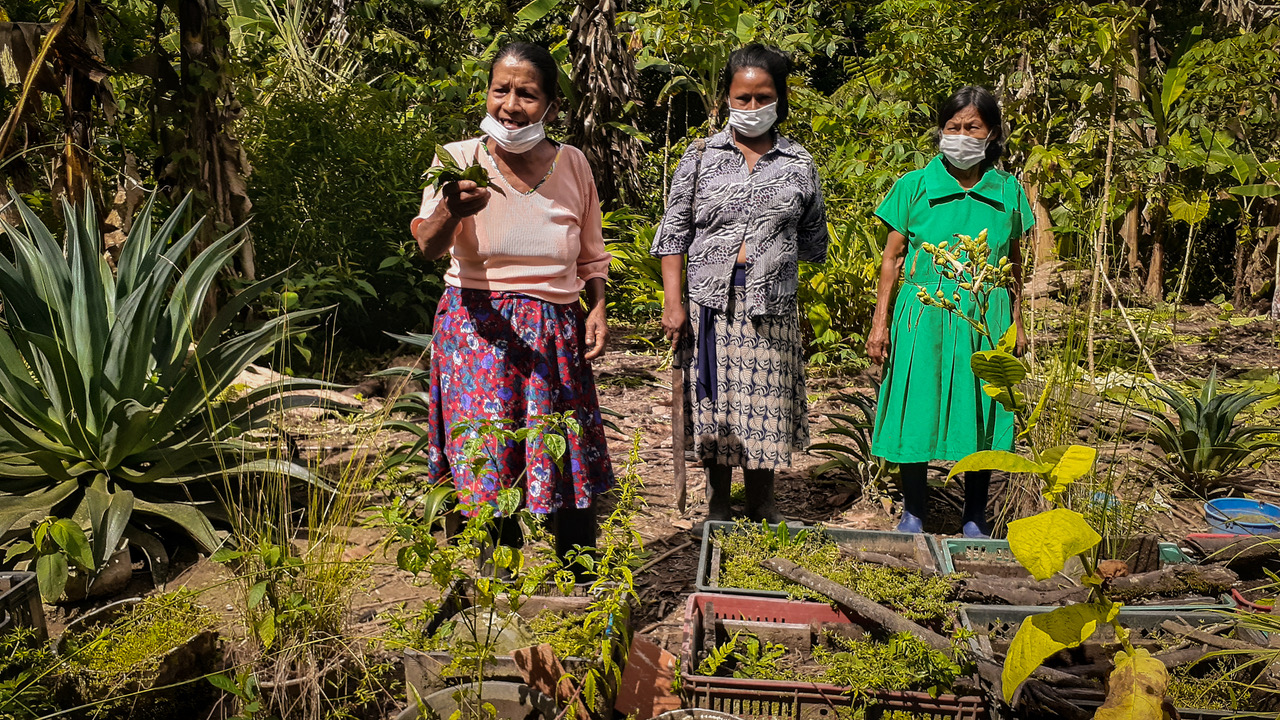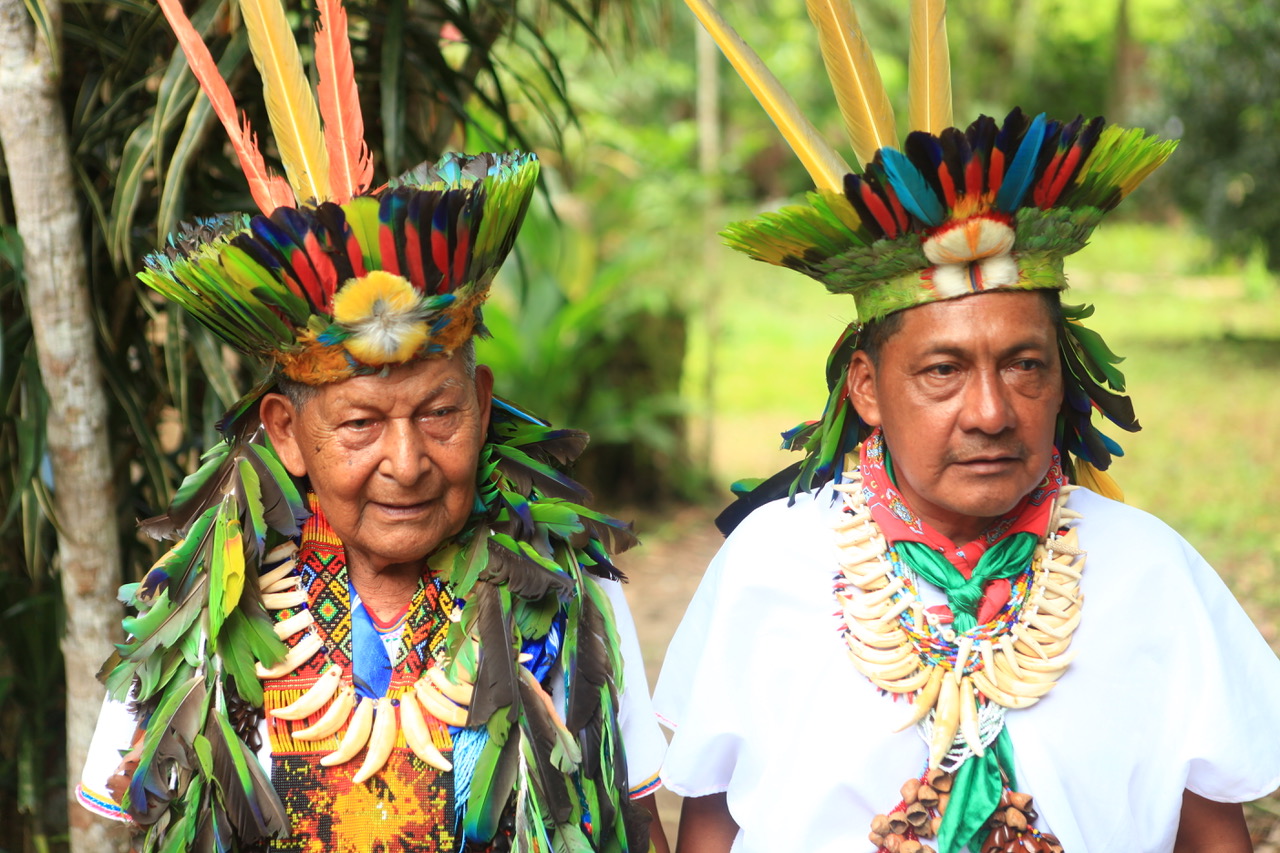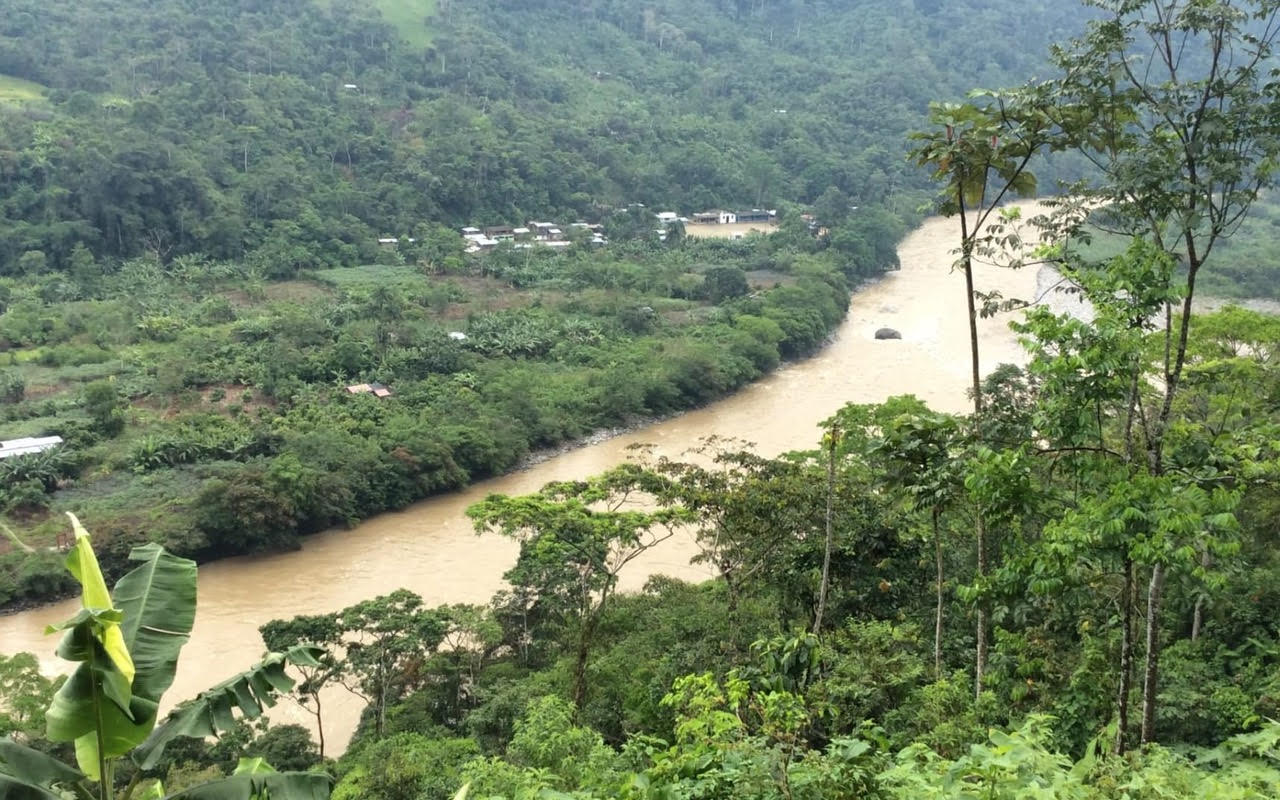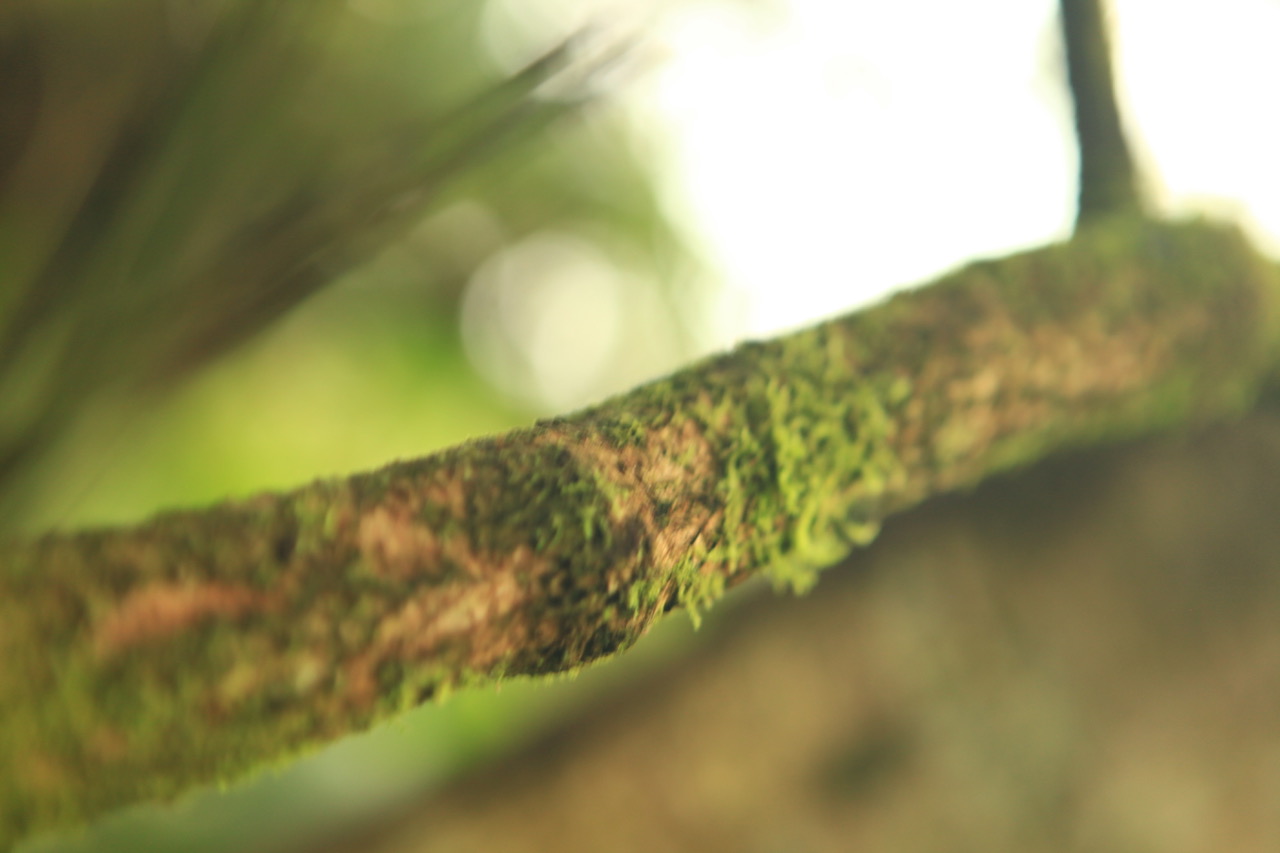- UMIYAC is an alliance comprised of spiritual leaders from five different Amazonian ethnic groups deemed to be in danger of extinction.
- The ancestral lands of these five groups are located near deforestation hotspots in the Colombian Amazon, making them the front-line defense for the rainforest.
- Presided over by spiritual leaders, the traditional yagé ceremonies that tie these ethnic groups together reinforce the spiritual wisdom needed to retain their territories and autonomy.
MOCOA, Colombia — The Union of Traditional Yage Medics of the Colombian Amazon (UMIYAC) brings together five ethnic groups — the Cofán, Inga, Siona, Coreguaje, and Kamëntsá — who practice spiritual ceremonies for individual and community healing based on ayahuasca, or yagé. But that’s not all that these communities have in common.
All five of these Indigenous groups are also classified by Colombia’s Constitutional Court as being at “risk of physical and cultural extermination.”
“Our strategy has to do with revitalizing and strengthening our spiritual connection with Mother Earth,” said Miguel Evanjuanjoy, advocacy and project manager of UMIYAC, in a video interview with Mongabay in October. He was speaking from his community of Yunguillo, in the department of Putumayo. “As stewards of the Amazon rainforest, we care for the land because it is she who nourishes us spiritually and through her sacred products.”
Spread across the Putumayo, Caquetà and Cauca regions of southern Colombia, with a small crossover into Ecuador, the 22 territories represented by UMIYAC are on the front line of the battle to protect the Amazon. A 2018 study conducted by the University of the Andes in Bogotá, for example, shows the annual deforestation rate in Caquetà alone is 0.77%, the highest in Colombia and nearly twice the rate for tropical South America as a whole.

While the Putumayo region is not quite as hard hit, a planned new road connecting its capital, Mocoa, to the city of Pasto in Nariño department and then onward to the Pacific coast port of Tumaco has communities and environmentalists bracing for a sharp uptick in exploitative activity, particularly copper mining.
Evanjuanjoy of UMIYAC comes from a family of spiritual leaders and also has a university degree in environmental engineering, He said the threats to the communities’ territories , which he estimated cover more than 100,000 hectares (247,000 acres), include mining concessions by the government, illicit coca cultivation, land grabbing by cattle ranchers, territorial disputes by armed groups (both legal and illegal), road construction that crosses or disrupts their land, and abandonment by the Colombian government, which he said has made more promises than it has fulfilled to the communities.
“Those are some of the reasons why Indigenous people must live in perpetual resistance, defending our territories and resisting extractive, neoliberalist, and capitalist development models, which cause internal displacement and forced confinement as well as the assassinations of social leaders and human rights defenders,” Evanjuanjoy said.

Indigenous communities protecting the rainforest
“The territories occupied by the Indigenous groups involved in UMIYAC are very different than the Indigenous reserves that are located in the deeper interior of the Colombian Amazon region,” said Natalia Cecilia Hernández Escobar, the dialogues and knowledge hub coordinator of Gaia Amazonas, a Bogotá-based nonprofit that works on the ground with communities throughout the Colombian Amazon.
“They have been directly affected by colonization and exploitation for hundreds of years, and the result is that the territories are much smaller and fragmented, and do not have the buffer of large national parks and protected areas.” she told Mongabay in a phone interview in October. She added this makes them and the rainforest more susceptible to the encroaching threats.

According to Gaia Amazonas, intact Indigenous groups are key to protecting the Amazon rainforest. The organization recently published the results of 30 years’ worth of data collected by the Amazon Geo-Referenced Socio-Environmental Information Network (RAISG) showing that Indigenous-controlled territories lost less than 1% of their forest during that time. That compares with more than 3% forest loss across the Colombian Amazon in general in the same period.
Recent research that looked at 245 Indigenous territories in the Amazon over a span of more than 30 years shows that, indeed, Indigenous groups are the best stewards of the Amazon rainforest, especially when they have autonomy and full land rights. But environmentalists still struggle to find ways to ensure those rights. For UMIYAC, the answer lies in their ancestral spiritual practices.
“We are peoples of struggle and resistance, with a millenary history and memory. More than 500 years ago the invaders arrived and colonized our sacred territories,” Evanjuanjoy said. “To stop and reverse the process of extermination unleashed against our ancient cultures, we turned to traditional wisdom and spirituality.”

Spiritual solidarity for cultural, environmental preservation
Central to the traditional practices of all five ethnic groups involved in UMIYAC is the ceremonial ingestion of yagé, more commonly known as ayahuasca, a potent hallucinogenic tea made by slow-brewing several different rainforest plants that contain the psychoactive chemical N,N-Dimethyltryptamine (DMT). While the drink is consumed widely across the upper Amazon, yagé practices are particularly strong in this part of the Colombian Amazon and are presided over by spiritual leaders.
“Spiritual leaders are the pillar of community life, they ensure territorial spiritual harmony, and they care for the health of individuals and the collective,” Riccardo Vitale, an anthropologist who has worked as an adviser to UMIYAC since 2016, told Mongabay in a phone interview. “Important decisions about community and/or family affairs are taken in ceremonial settings with spiritual healers providing advice and direction.”

An example of how traditional yagé practices lead directly to the preservation of ancestral territories comes from 2015, when the Siona (one of UMIYAC’s most endangered communities, with a population of just over 400 spread over several sparsely settled territories) agreed to end a round of consultations with the oil company Amerisur, vetoing hydrocarbon exploration and extraction on their lands.
“The Sionas, after a difficult period of infighting and disagreements partly caused by the oil company’s promises of financial incentives, decided to analyze the matter in yagé ceremonial settings,” Vitale said. “When spiritual rituals became the medium through which decisions were taken, community leaders, now assisted by spiritual leaders, unanimously rejected Amerisur’s plans and unilaterally ended the talks.”
The ceremonial use of yagé opens participants up to ancestral knowledge, particularly the “natural laws” established by the ancestors that allow communities to “live in peace and harmony with other beings in nature,” Evanjuanjoy said.

As one of the more widely studied substances in the “psychedelic research” renaissance currently happening in Western countries, yagé shows potential as a treatment for prominent modern mental health disorders like depression and addiction. It even holds promise, according to ethnopharmacist Dennis Mckenna, as a catalyst for changing environmental consciousness.
“The sacred plant of yagé is a spiritual nourishment for people,” Evanjuanjoy said. “Through this plant, our grandmothers and traditional healers receive the wisdom to heal the diseases that affect the individual, the community, and the territory.
“It is the light, the path, the guide, and the primary tool to continue defending our territories and to continue the struggle for the survival of our culture.”
UMIYAC now uses traditional yagé ceremonies as a medium to design and establish projects that strengthen the communities’ ability to survive and to retain their territories. It is currently raising money for a fund that supports women as botanical specialists and the medicine gardens they traditionally care for; an initiative to financially sponsor spiritual elders so they can continue to serve their communities and pass on their knowledge to younger generations; and an ambitious plan to build an Amazonian medical center that serves the five ethnic groups and fosters the preservation of traditional knowledge.
“For us the territories are sacred, we are part of Mother Earth,” Evanjuanjoy said. “Mother Earth offers us all the knowledge we need to survive. It provides for us. As a demonstration of our gratitude, we must be stewards for the Earth, care for it, conserve it, and protect it.”
Banner image: Elder Spiritual Leader Taita Paolino Mojomboy with other spiritual leaders from UMIYAC. Credit:UMIYAC.
